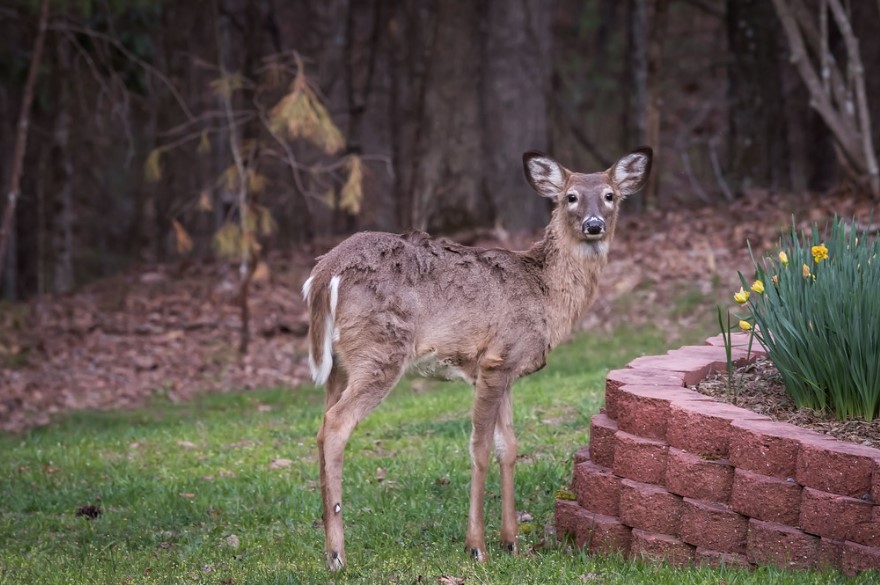Mon, 17 Oct 2022 10:47:03 CDT

Deer are always looking for their next meal, and they often find forage in a well-kept landscape. Whether rural or urban, homeowners can get frustrated when their landscape ends up looking like a salad bar after the lunchtime rush.
In many cases, plants in a home landscape have been fertilized and are well taken care of, which makes them especially attractive to wildlife.
There are different things homeowners can try to deter the deer, but some control methods are too expensive or unreliable, said Casey Hentges, host of Oklahoma State University Agriculture’s television program, Oklahoma Gardening.
“Installing a high fence around the entire property is costly, and home-remedy repellents, such as soap shavings or pet waste, aren’t reliable. One of the best ways to keep deer out of your landscape is by not providing their favorite snacks,” she said. “While there’s no such thing as a true deer-resistant plant, there are some that deer simply don’t find palatable.”
Some plants and shrubs considered to be deer resistant include:
• Aphrodite Sweetshrub
• Spirea
• Ornamental grasses (Pink Muhly, Ravenna grass, Lemon grass and Switch grass)
• Beebalm
• Goldenrod
• Verbena
• Marigold
• Bottlebrush Buckeye
• Butterfly Bush
• Gardenia
“Deer don’t like plants with strong smells. One way to keep deer from using the landscape as a snack bar is to plant lantana, chives, mint and other strong-smelling herbs around those plants you’ve noticed deer prefer,” Hentges said. “Plants with prickly or rough leaves or those with a bitter taste aren’t at the top of the favorite foods list, either.”
Depending on environmental conditions, such as drought or large deer populations, deer may be enticed to eat plants they don’t generally find palatable because natural food supplies are limited.
Hentges said deer will sometimes browse new plantings or established plants with tender new growth but then avoid those same plants when the leaves are mature.
Homeowners looking to upgrade the landscape may choose to plant new trees, and fall is a good time to establish new trees. However, this time of year is also deer mating season, said Dwayne Elmore, OSU Extension wildlife specialist and Bollenbach Chair in the OSU Department of Natural Resource Ecology and Management.
“Rut is the time in which deer breed. Deer start to rub the dried velvet on a small tree or shrub in the fall and will continue to rub to mark territory for the next couple of months,” Elmore said. “Repellants can be found in stores, but they really aren’t a good option. Cages and protective wrap are the most effective ways for homeowners to protect the newly planted trees.”
Hentges said the rubbing removes the thin layer of bark on small trees and can cause serious damage or destroy them.
“Plastic or mesh tree guards are a quick fix. Another option is to make a small cage or fence around the trees to prevent the deer from getting close to them,” she said. “Trees are an investment in your landscape, and it’s important to protect them.”
OSU Extension offers more gardening information.
OSU Extension uses research-based information to help all Oklahomans solve local issues and concerns, promote leadership and manage resources wisely throughout the state's 77 counties. Most information is available at little to no cost.















